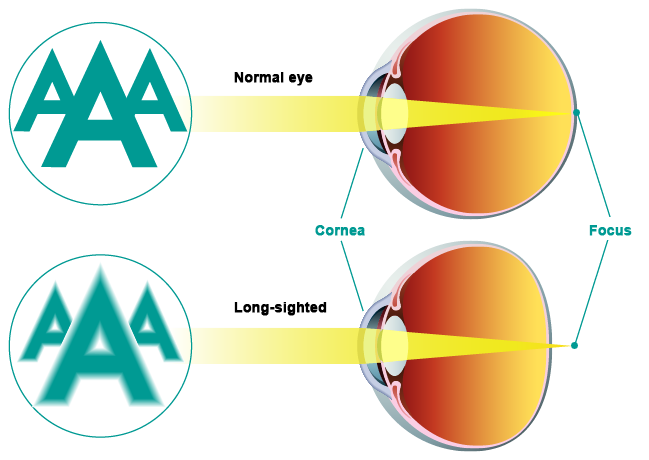Long-sightedness
Hyperopie
Long-sighted people usually do not experience any trouble when looking at distant objects. However, they perceive a blurry image when looking at close objects. In order to be able to produce a clear image, the incoming light has to be focussed on the retina. Hyperopia is characterised by a disproportion between the refractive power of the eye and the length of the eyeball. As a result of this condition, the eye does not focus the visual image of objects on the retina but behind it. In the case of severe hyperopia, persons concerned are not able to see clearly neither distant nor close objects.

How hyperopia becomes noticeable
The severity and cause of the condition as well as the age of the person concerned determine when and if hyperopia is recognised – very often, it happens rather late. Children’s eye lenses are still very flexible, which is why they can unconsciously compensate for the hyperopia by reinforcing the adaptation of the refractive power of the eye. If children begin to be cross-eyed, it can be sign for hyperopia. Often, this type of refractive error becomes noticeable while reading or working with a computer.
Recommended treatment options
Long-sightedness often occurs in combination with other types of refractive errors. In the course of a comprehensive consultation, we will discuss the appropriate methods to correct this condition. The following methods can be employed:
- Femto-LASIK
- LASIK
- PRK
- Epi-LASIK
